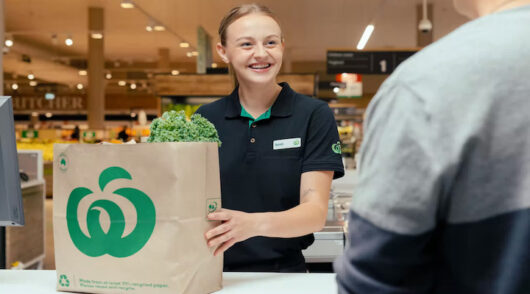Retail media is such a dynamic marketplace, we wanted to get a perspective from the folk who are taking a leap. We commissioned independent research by TRA (The Research Agency), with senior retail leaders and below are the core themes.
The Retail Media sector grew 17 per cent year on year, a reflection of the high number of multi-brand retailers like department stores, home electronics, sport and leisure, beauty, pet care and pharmacies which are actively commercialising their media networks. A prime example was the launch of David Jones Amplify, the first premium retail media business with a highly attractive advertising offer for endemic (suppliers) and non-endemic brands (products they do not supply).
Now, more than ever
Retailers are facing storm clouds from the economic downturn, a proliferation of channels and overwhelming complexities of data and MarTech. As one retail leader explained: “The media proliferation is so much more diverse now than 15 years ago. Now you’ve got this explosion of digital, and you’ve got this audience that is completely proliferated. So therefore, the best way to talk to your qualified customers is when they are shopping, or when they are in the environment, and the headspace, and that’s in the in the moment of purchase.”
Retail media’s importance has never been more evident. David Jones CMO James Holloman encapsulates it well, “owned media is experiencing a renaissance, as people recognise that their real estate is extremely valuable for communicating with and telling stories to their core customers.”
Kate Blythe, CMO at beauty retailer Mecca is all-in on owned media’s potential. “The power of your owned media is pretty phenomenal in terms of how you build brand awareness, but also hook your customers in for long-term loyalty as well. We absolutely evaluate owned media, it is a super important lever for the business.”
It is common among retailers for owned media to be leveraged through the merchandise department and managing the transition into marketing or media specialists takes careful consideration. As one retail CMO explains: “The merch team is primarily responsible for driving the commercial relationships of the business. You have merch selling something, and they’re looking at it through their own lens of their own category or business unit, and return generation through that lens, as opposed to from a marketing lens. It needs to have a really clear commercial and customer benefit.”
Start with a valuation
The consensus amongst retailers interviewed was that whether you are using owned channels for your own communications or leveraging it with partner brands, you need to understand the value of your media ecosystem.
One retail media leader describes the internal interest once value is known. “The margin is the attractive point internally, in a lot of instances there’s not a great deal of capital investment if you’re already using certain assets for trade assets, to sell them in a different way. We have radio in our stores, so it’s relatively cost-effective in those initial stages to put a minimum viable product together and start making money from it. That looks great to the business because you can get a return quite quickly.”
For David Jones Amplify, certain inventory was protected for their own communications and certain inventory was offered to partners for commercial leverage. James Holloman explains the importance of knowing when to charge: “You have to behave like a media owner because someone in the primary benefit business will ask for it for free and you begin to erode its value. The opportunity cost is I could give it to you for free, but I have this person who wants to pay.”
Another retail executive explains the transition to structured monetisation: “Historically there’s always been brands within store, it’s just never been seen as a fiscal opportunity. Because everyone’s working in their own sections and merch was liaising with those people, then the opportunity to monetise that, to purchase marketing space, came up, and it was a bit ad hoc, with no real process or planning. Now with the new supplier-funded team, that just means there are guidelines, a strategy with how that maps out on the calendar year.”
Retailers are finding their feet and excited about exploring what leveraging retail media means for their organisation.
Sonder’s full Annual Owned Media Report & Ranking can be downloaded here.






